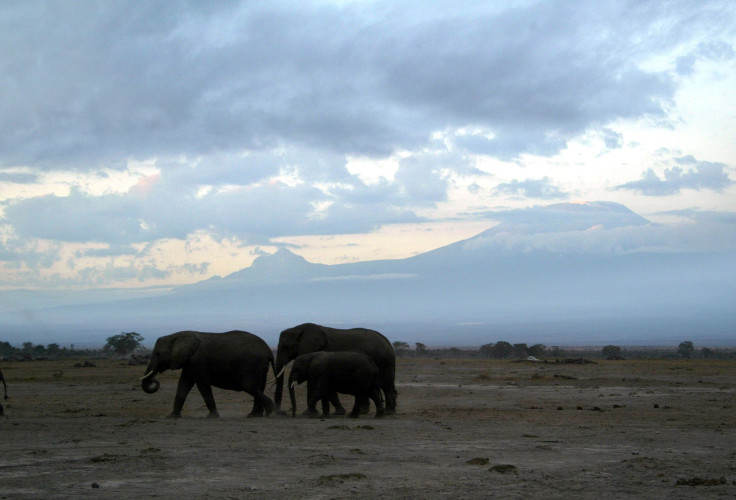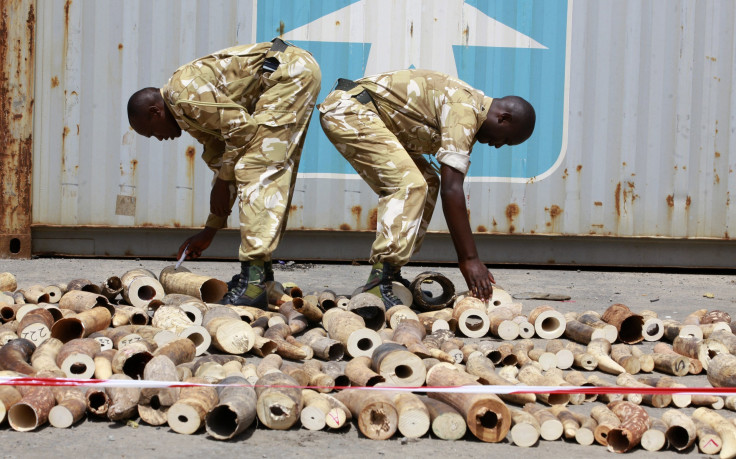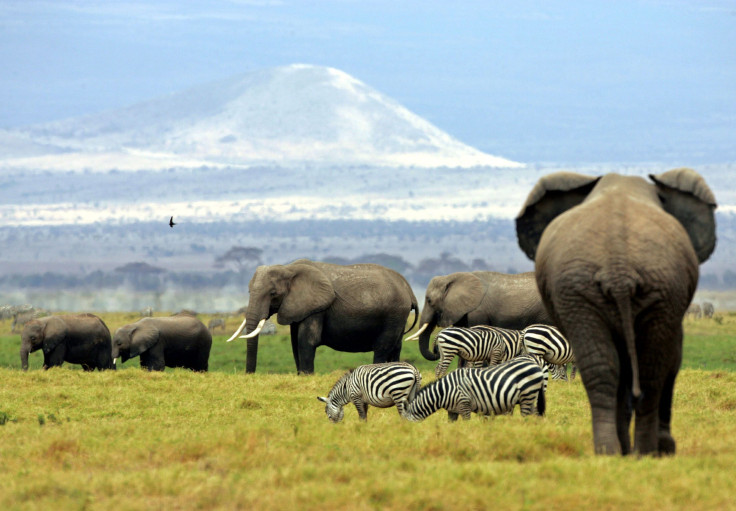Anti-Poaching Groups In Africa Becoming “Militarized” To Protect Elephants, Rhinos, Small Arms Survey Shows

Poachers hunting Africa’s elephants and rhinos are getting tougher, killing the animals at an alarming rate. In their quest to profit from international black markets where ivory and rhino horn can be worth more than cocaine, these armed groups are getting their hands on bigger, more powerful weapons. But so are their opponents.
“As demand for ivory and rhino horn remains high, some poachers and anti-poaching forces are becoming increasingly militarized, using military-style weapons and adopting more aggressive tactics,” reads the Small Arms Survey 2015: Weapons and the World, released this week.
In Central Africa, where poaching has had an especially large impact, poachers come from all walks of life. Some are armed militia members or commercial poachers, while others are subsistence hunters lured by the money or even rogue law enforcement personnel. And as poaching rates continue to go up, those trying to stop the killing are finding themselves in a difficult position.
“Poachers are making widespread use of military-style weapons and high-calibre hunting rifles in their pursuit of elephants and rhinos, complicating the efforts of wildlife rangers to stop them,” the report says. “As these groups can potentially operate in large numbers and possess considerable firepower, they can pose unique challenges to rangers and others charged with protecting wildlife.”
In 1973, 102 countries signed the Convention on International Trade in Endangered Species of Wild Fauna and Flora, commonly known as CITES. The agreement regulates trade in endangered or threatened species. In 1989, the organization classified elephants among the species most at risk, which prohibited all trade except for very few instances such as scientific research. Today 181 countries are parties to the convention, but the elephants are in more danger than ever.
Since 2008, illegal killing of elephants has been shown to be correlated with the price of ivory on the black market. When prices go up, so did poaching, according to a 2014 paper published by the Nature Conservancy. Moreover, their study of the continent’s elephant population show that the level of deaths outpaced elephants’ natural population replacement rates.

Demand for Ivory and rhino horn comes largely from Asia and especially China, where these materials are highly sought after and used for everything from art to medicine. And as the Chinese economy expanded, so did the market -- spurring even more poaching in Africa.
“News of rising ivory prices can spread quickly, prompting spikes in poaching levels and attracting greater numbers of would-be poachers,” the report says. “Among Maasai communities in Kenya, information about high prices paid for ivory can come from radio broadcasts or via Internet news sources.”
And multiple groups have been ready and willing to capitalize on the potential riches, even moving across borders to do so. According to the report, armed groups from the Darfur region have killed elephants in Chad and Cameroon, while multiple military and nonstate groups, including Uganda's Lord’s Resistance Army, were blamed for elephant deaths in the Democratic Republic of Congo.
“Despite the efforts of national wildlife agencies, security providers, conservancy organizations and U.N. bodies to combat illegal poaching, armed groups continue to kill elephants for their ivory,” the report says.

Some use traditional weapons like spears or poison to kill elephants, while others opt for hunting rifles or Kalashnikovs to do the job -- which aren’t hard to find.
“The illicit trade in weapons and ammunition, including diversion from state stockpiles, is giving poachers relatively easy access to military-style weapons and hunting rifles,” the report says.
While most of these weapons come from Libya by various routes, others are known to come from conflict zones in countries such as Angola, Burundi, Mozambique, South Sudan and Sudan. Regardless of their origin, almost all these weapons likely come to poachers after officials look the other way. Often these arms have been diverted from government security forces, especially those in unstable situations. At times, even weapons seized from poachers have found their way back to the black market and into the hands of different poachers.
But now that poachers are more armed than ever and don’t seem deterred by arrests or fines, some officials are considering a military response.

Botswana, Cameroon, Kenya, South Africa and Zimbabwe have all started using military technology and techniques to fight poachers. This includes special training for their rangers, creating anti-poaching task forces and using satellite imagery or drones to gain intelligence for certain areas.
However, “data supporting military anti-poaching policies is inconclusive,” the report says, noting that even in countries with shoot-to-kill policies, elephant kill rates would continue to go up. And in some cases, local subsistence hunters seeking other animals were killed by government patrols, while other forces were accused of theft and abuse, according to the report.
The widespread availability of firearms on both sides makes the fight against poaching more difficult and complex, and the Small Army Survey urges international actors to step in to stop the illegal flows. But restricting weapons won’t solve everything. Global demand is usually a good predictor of how bad poaching will be.
“Just as poaching has different causes and takes diverse forms, actions to combat poaching will need to be multidimensional, but also context-sensitive, if the threat currently facing African elephant and rhino populations is to be lifted,” the report authors wrote. “Without a substantial reduction in the demand for ivory and rhino horn, efforts to deter poachers through armed interventions may disrupt poaching, but not stop it.”

© Copyright IBTimes 2025. All rights reserved.






















